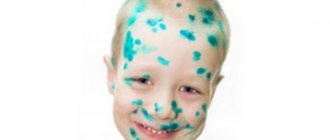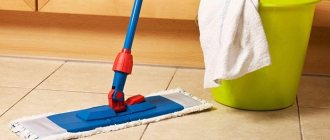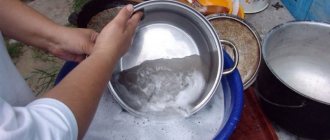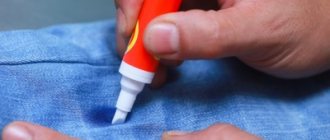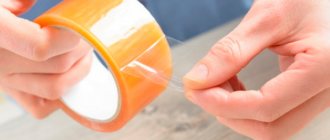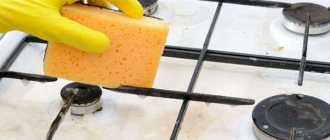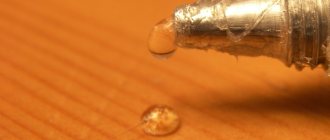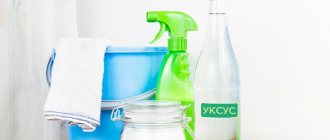How to delete
You can get rid of iodine stains using safe methods. There is no need to use strong solvents or household chemicals containing chlorine.
Alcohol and its solutions
Surely there is alcohol or an alcohol-based substance in your medicine cabinet that will help you quickly get rid of iodine stains. Algorithm of action: a cotton pad is immersed in the solution and then applied to the stain. You can rub the stain and the blot will quickly discolor. When working with alcohol, it is important to remember that this substance dries the skin; It is not recommended to remove stains on the face with alcohol.
See also
How and how to remove machine oil from clothes at home
Baking soda
You can remove iodine using alkali; baking soda will do. The product will not ruin your manicure, but on the contrary, will gently clean your nails.
Warm baths with a baking soda solution are a good way to remove stains from your hands. Add 4 tablespoons of baking soda to 1 liter of warm water. Hands are immersed in the product for 10-15 minutes; if the skin is heavily soiled, the skin is additionally rubbed with dry powder. After removing the contamination, the skin is treated with a rich, nourishing cream.
Sea salt
Based on the principle of action of baking soda, baths with sea salt are used, which has a positive effect on the condition of the skin and has a general relaxing effect.
Important! Sea salt must be chosen without dyes to avoid the effect of yellowness remaining from iodine.
Hydrogen peroxide
A proven product that removes iodine stains completely (stains and yellowness disappear). Hydrogen peroxide effectively removes stains from clothes. The product is safe and can be used by children and pregnant women. It is important to rinse off any remaining product after finishing the cleaning procedure.
Chlorhexidine bigluconate
Works in the same way as hydrogen peroxide. Apply a small amount of product to a cotton pad and wipe off the stain. After treatment, the skin is soaked in nourishing cream.
Soap solution
Even iodine network can be removed with a solution of laundry soap. The surface of the skin is rubbed with a washcloth and soapy water, and then rinsed with cold water.
Dishwashing liquid
Experienced housewives combine the process of washing dishes and removing iodine stains from the skin of their hands. After 20 minutes of working in the kitchen, the dirt disappears. If there are yellow stains left, you can wipe them with the back of a melamine sponge with the same product.
Lemon juice and citric acid
Freshly squeezed lemon juice can whiten age spots and remove iodine impurities. To avoid acid burns, the juice is diluted in a 1:2 ratio. The resulting solution is applied to a cotton swab and applied to the blot for 10 minutes, then the skin is washed with cold water.
When applying such a mask, the skin receives an additional vitamin cocktail.
Fat cream and vegetable oil
A gentle way to remove stains. Apply oil or greasy cream to a cotton pad and wipe off the dirt. If the effect is insignificant, it is recommended to repeat the procedure.
See also
TOP 10 ways to wash printer ink off your hands
Skin scrub
A vitamin scrub will get rid of iodine drops on the skin and make your hands soft and velvety. You can make the mask yourself. One ripe kiwi is peeled and softened in a blender, 1 tablespoon of honey is added and rubbed into the skin. This scrub can be used for facial skin, and a healing effect is achieved: the skin is noticeably tightened and the pores are cleansed.
Nail polish remover
As a rule, it contains acetone. You can quickly wipe off iodine drops with nail polish remover; it is not recommended to use it on the skin, as an allergic reaction may occur and the area of contamination will begin to peel off. It is most effective to use nail polish remover with drops of iodine on the nails.
Honey
A quick, high-quality result in removing impurities is combined with the beneficial effects of iodine on skin and hair. It is best to use crystal honey. If you only have liquid coffee on hand, add ground coffee to its composition.
The skin is perfectly cleansed of iodine and other impurities, becomes soft and tender, and acquires a healthy color.
Removing iodine from clothes
It is quite difficult to remove traces of iodine from textiles, but you can cope with the problem using improvised means or household chemicals. The simplest method is washing using laundry soap:
- Wet the contaminated item.
- Rub the item well with laundry soap and rub the fabric. Be careful to remove stains without damaging the material.
- Rinse the item in clean water and repeat the procedure if necessary.
Dishwashing detergent will help remove stains: pour a small amount of liquid onto the stain and leave for 2 hours. After the allotted time, rub the stain with a sponge, then wash the clothes as usual. Similarly, use a household stain remover or bleach.
Washing with laundry soap or stain remover will help remove pharmaceutical stains from clothes.
You can remove traces of medical solution using potato starch:
- Moisten the contaminated area.
- Sprinkle starch onto the stain and leave for a couple of minutes.
- Rub the product in with an old toothbrush to clean out the fibers of the fabric.
- Wash the product as usual.
Potatoes will help get rid of traces of iodine on clothes. Cut a small piece of the peeled tuber and rub the stained area, and then wash the product
How to treat iodine burns
The action of iodine often leaves burns on the skin, the damaged area hurts and peels. To avoid this unpleasant phenomenon, wear latex medical gloves when working with iodine. If, when iodine gets on the skin, its concentration is so high that a burn occurs, it is necessary to provide first aid to the victim:
- rinse the surface with cold running water;
- To numb the injury site, you can use menthol toothpaste; it is applied on top of the burn.
If a blister forms on the skin, you should consult a doctor who will prescribe a course of treatment. Folk remedies used:
- sea buckthorn oil;
- aloe vera leaf paste;
- tea compress;
- grated fresh potatoes.
It is important to prevent infection from occurring. Medicinal ointments are used as antiseptics: Levomekol, Dermazin, Bepanten.
See also
20 best ways to quickly and easily wipe felt-tip pen off skin
Methods for removing iodine stains from different surfaces
When treating wounds, medical solution often gets on the floor, furniture and other surfaces. To get rid of yellow marks on linoleum, parquet or laminate, use one of the following methods:
- soak a sponge in dishwashing detergent and scrub the dirty area thoroughly;
- prepare a solution based on 1 liter of water and 2 tbsp. l. "Whiteness." Dampen a cloth in the resulting liquid and treat the dirty surface;
- Sprinkle soda on the stain and cover with a damp cloth, and after an hour, thoroughly wash the floor.
Household cleaners or baking soda can help remove iodine stains from flooring. After removing marks, wash the surface thoroughly with clean water.
To remove iodine from plastic, use a soap solution or 5% ammonia. The following methods will help remove traces of antiseptic from wood:
- treat the surface with an alcohol solution and then rub with an eraser;
- wipe the wooden product with a sponge soaked in 9% vinegar;
- Apply hairspray to the stain and scrub with an old toothbrush. Repeat the procedure until the stain is completely removed.
Zelenka and iodine are common remedies in every first aid kit. After using them, unsightly marks remain on the skin, and the table, floor and other surfaces often become dirty. To remove iodine, simple and affordable home remedies are used, which are found in the bathroom or kitchen of every housewife.
Process Features
The stains accidentally got on the nail plate, or the product was applied on purpose; it is not advisable to leave it - iodine eats into the structure and spoils the appearance. Pigmentation does not wash off with plain water; effective cleaning agents are selected.
The longer the mark remains on the nails, the more effort is spent on removal.
There are several options for quickly removing yellow stains from a plate.
For sensitive skin, those that do not cause allergies are suitable. If pigment gets on extended, varnished nails, clean with gentle movements.
The dark spot is not removed in one step; the procedure is repeated several times.
After cleansing, apply a nourishing moisturizer to your hands because stain removers are harsh on fabrics. Rubbing olive oil has a good effect.
Caring for skin affected by iodine
When a lot of caustic substance gets on the skin, only quick action will help to avoid a burn.
If the spot is brown or blisters appear, it means the skin is burned.
It is urgent to remove the iodine that has not had time to be absorbed with boiled warm water. This needs to be done for a long time, from 10 minutes to half an hour, depending on the time of the burn. Iodine burns are eliminated with neutralizing substances:
- crushed chalk;
- tooth powder;
- soap solution;
- 20% sugar syrup.
It is forbidden:
- treat the wound with potassium permanganate or alcohol;
- rub, pierce blisters;
- apply ice.
Apply compresses until complete healing:
- with drunken tea;
- with grated raw potatoes;
- with St. John's wort or sea buckthorn oil.
The mixture is wrapped in gauze and kept on the wound, without covering anything on top.
You can treat iodine burns with oatmeal porridge, applying it as a compress.
However, in case of extensive or severe damage, especially if a child received a burn, it is necessary to consult a doctor and be treated under the supervision of a specialist.
Why does iodine eat into nails?
This is an active remedy. Once on the skin or plate, the substance reacts with other chemical components that make up the tissue. This is due to its penetration into the layers of the epidermis.
The body needs a natural element for the normal functioning of organs and systems.
When the thyroid gland does not produce iodine in full, drops of the substance that fall on the skin are quickly absorbed into the tissue structure.
If there is an excess, most of the iodine evaporates from the surface of the nail or skin along with alcohol vapor. As a result, the stain does not disappear, but gradually fades .
How to prevent emerald spots from appearing
If certain areas of the body are treated with antiseptics, colored marks cannot be avoided, but simple tips will help prevent the appearance of stains on healthy areas of the skin and surrounding objects:
- Choose a convenient release form. To the modern consumer, iodine and brilliant green are available in the form of applicator pencils. This form of release allows the preparation to be applied locally, only to those places where it is required, and also provides reliable protection against accidental spillage of the product.
- Handle with care. Place an open bottle only on a hard surface, after laying it down with newspaper or a thick napkin.
- Keep away from children. In a house where there are children, iodine and greens must be stored in cabinets that the child cannot reach. Do not leave products unattended and do not give your child bottles of antiseptic.
Modern pharmacology offers a wide range of colorless antiseptics that can be used as analogues of iodine and brilliant green: calendula tincture, Baneocin, Chlorhexidine, hydrogen peroxide, Octenidine, etc. But in some cases, you cannot do without drugs known since time immemorial.
However, if trouble could not be avoided, you should not despair: proven methods will help you quickly solve the problem.
Method number 2. Discoloration with lemon
Lemon has unique whitening properties, making it ideal for cleaning your hands and face. Simply apply fresh lemon juice to cotton wool and apply to the skin for five minutes.
If the trace of iodine has not completely disappeared, then you can repeat the procedure. It is not advisable to use this method for cleaning clothes (especially colored or printed ones), since lemon can discolor the fabric.
Features of cleaning depending on the type of nail coating
If iodine gets on your extended nails
Not all methods suggested in the table are applicable on artificial nails. Aggressive means lead to delamination of the composition, which necessitates re-building.
Harmless cleaning options are vegetable oil, soda baths, toothpaste. It is wiser not to remove iodine from extended nails, but to apply a layer of dark varnish on top.
Ways and means to remove iodine from shellac (gel polish)
All known methods, used with caution, will help remove antiseptic from shellac. Acetone, paint remover, and alcohol-containing compounds turn a glossy surface into a matte one.
Brown stains from gel polish must be removed immediately. It quickly eats into the paint layer and remains on it in the form of a yellow mark, which is removed with repeated vinegar baths.
What to do if iodine gets on your hair
The main rule is to act immediately. The solution not only leaves brown spots, but also destroys the hair structure.
Oil.
Flaxseed, olive or coconut will do. Apply a little oil to a cotton pad and wipe the stained area. Then wash your hair with shampoo. The disadvantage of this method is that it is difficult to wash the oil out of the hair, so it is better not to apply the product over the entire length. You can use special cosmetic oil, but the effect will be weaker.
Laundry soap.
Apply soap to hair and rinse with warm water. After washing, it is recommended to leave on a nourishing mask, as soap dries out curls, making them dull and unruly.
It is not difficult to remove iodine from skin, nails and hair. It is much more difficult to remove iodine stains from clothing. In these cases, it is better to take the items to the dry cleaner.
Such corrosive iodine
In nature, iodine is a rare element, although it is found in small quantities almost everywhere. It is a solid crystalline, chemically active substance that is obtained from seaweed and oil waters.
Elemental iodine kills microbes and disinfects tissue near the wound surface, so its 5% alcohol solution is used to treat skin lesions.
A third of the substance from the solution applied to the skin combines with microelements of the body. The rest becomes active iodine. Partially absorbed, penetrating into tissues.
In large quantities the drug is toxic. It is used with caution: in case of overdose it is easy to get burned. It is not recommended to treat mucous membranes with it.
When treating with iodine you cannot:
- cauterize a large surface of the skin;
- take orally and pour into the wound;
- use for inhalation;
- Use undiluted for children under 6 years of age;
- use in case of allergies.


